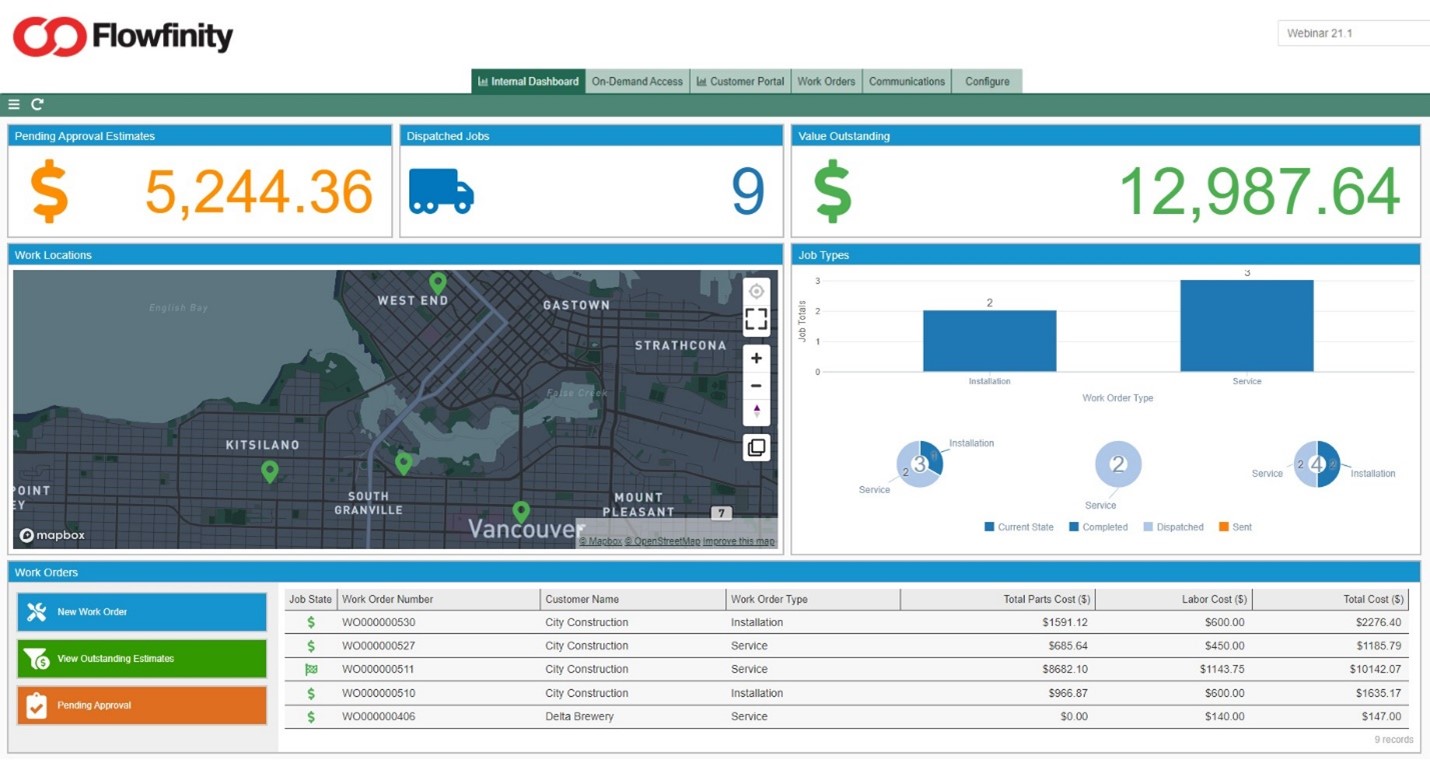The Evolution of Field Data Collection
Jan 25, 2022, by Sean King

Background
Streamlining how data flows from the field to the final report is vital for any field service organization. that conducts on-site maintenance, inspections, or monitoring at the core of operations. We'll look at the evolution of field data management, from the era of paper forms to current digital best practices. Then we'll look at the future of field data, 24/7 condition monitoring leveraging IoT.
The Past
Mountains of paper, errors and frustration
Veteran field service professionals remember how data collection used to be. Preparing paper forms, locating existing records, hand-drawing site diagrams, and transferring photos and files from a device. Then physically returning it all to the office, only to wait further for the data to be transcribed, analyzed, and typed up into a final hard copy report.
And don't forget how difficult it could be to decipher handwritten paper forms filled out during inclement weather or by staff with 'less than perfect' penmanship! Preventable human errors cost valuable time and lead to significant project risk.
Thankfully over the last two decades, things have evolved. Improvements in mobile computing have led to a revolution in field data collection. Mobile apps have allowed field managers and admins to dedicate more time towards developing insights and improving their processes, spending less and less time on mundane data entry and administrative tasks.
The Present
Smart forms – no more paper!
The rise of mobile devices made it possible to better collect and manage data at the source. And, in recent years, many vendors have offered simple mobile form solutions to replace paper in the field. Although limited, these initial simple forms were a vital step in the evolution of data collection. Simple digital forms allowed records to be extracted directly into spreadsheets that were relatively easy to manipulate with reduced potential for human error.
But as technology has advanced, organizations should now leverage more robust data collection apps. Particularly platforms that promote flexible field service workflows. These new platforms include a mix of smart and simple fields, providing the ability to collect and archive rich data types, including images, audio, GPS locations, and barcode scanning.
It is also possible to create sophisticated workflows, including on-device calculations that ensure data accuracy, automated email notifications, and reporting that improve communication between the field and office. Offline functionality also guarantees data is not lost when working in remote or restricted areas.

Centralized database – access records anywhere
Ideal field service solutions leverage centralized, relational databases. These SQL databases are increasingly hosted in the cloud, allowing organizations to avoid incurring the cost of hosting data centers.
Also, this structured approach to data management provides two benefits over the paper-based and simple spreadsheet-driven data collection processes of the past.
First, data collected on smartphones can be submitted instantly to the database using an internet connection. This completely removes delays and errors associated with retrieving, transcribing, and storing multiple paper forms or versions of a spreadsheet file.
The second benefit of centralized databases is real-time two-way communication, sending and receiving data between the field and office. This allows organizations to implement sophisticated workflow capabilities. Data collection requirements may change depending on a variety of factors. As a result, organizations can now create custom apps that guide information through a business process from beginning to end and throughout the entire enterprise.
This two-way communication empowers field users to see data in real-time to make better and more timely decisions. For example, a field technician can instantly access previous records while in the field, providing context and supporting data.
No more rifling through past paper forms, in the field or the office, to find important information! Every record is available in an instant.
Mapping & Integration – closing the loop & creating end-to-end workflows
In the past, a lack of viable tools for tying structured data to maps made it difficult for organizations to leverage geographic data visualizations.
Hand-drawn diagrams would show the location of field assets or inspections. Collecting and maintaining the relevant data to create up-to-date digital maps proved prohibitive for even the most well-resourced organizations.
Modern advances in Geographic Information Systems (GIS) data collection and management practices have made it possible for organizations to embrace mapping as part of their workflows.
The right field service solutions allow you to render coordinates captured by smartphones on basemaps connected to your centralized database. In turn, this makes creating management dashboards a quick, painless process. This removes the need to manually record coordinates and allows field managers to avoid paying for expensive peripheral dashboarding software.
Integration also aides field data managers by allowing different systems to communicate and share data. For example, consider integrating your field service solutions with your CRM solutions to create one unified system driven by your field data and custom workflows.

The Future
IoT & Automation – 24/7 data collection
Moving forward, the rise of the Industrial Internet of Things (IIoT) promises to bring field data collection into a new automated era.
The field service has moved from paper and pen to smart forms powered by smartphones. The next step will be IoT controllers that empower businesses to monitor conditions in real-time, 24/7.
These internet-enabled controllers will generate data streams using sensors, and edge devices can then take action or send this data to a centralized database.
Forward-thinking organizations will feed this real-time data to data processing robots. These software robots will analyze data using pre-configured business logic and take appropriate workflow action.
For field service organizations that require frequent or high-volume data collection, IIoT will revolutionize their workflows and allow for previously unimaginable levels of automation and accuracy.
About Flowfinity
To discover how your firm can optimize your data collection workflows, contact one of our experts.

